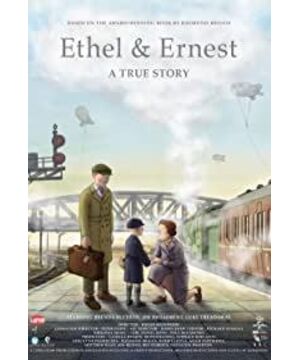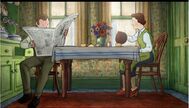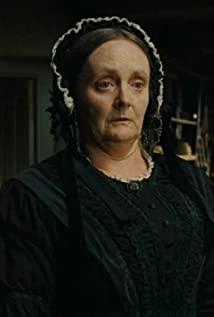The film tells a story that is almost invisible, as if flipping through Briggs' family photo album, witnessing every key moment of the family's half-century. The British historical background, intertwined with war and turmoil, was treated as a light background by an attitude of forbearance and restraint. There is no need to highlight and exaggerate the fears and pains experienced by family members in the years, watching the whole film and then revisiting the first scene, you can better appreciate the silent power of moisturizing things. The film also inherits the style of Briggs' work - simple hand-painting, elegant colors, gentleman-like character and a sad but not sad tone
.
The opening of the film combines the real world and the animation world in a unique style, and the idea of switching from the real world to the animation world using real paintings as a medium is also very clever and interesting. In addition to the concise editing, the picture of the film is exquisite. The protagonist's happy and contented character and interesting dialogues make people feel happy. The popularization of British historical knowledge interspersed in the play enriches the viewer's brain, and the emotional and infectious dubbing is in place. Let the audience's mood change with the protagonist
. (
The Ethel and Ernest families in the film are more like the epitome of the London commoner family in that era, which makes the film have a strong record of the times. The film is very popular, but this kind of memory killing is irresistible, and it will definitely hit some points in the audience and cause different degrees of resonance. After watching the film, looking back at the opening scene—a real, elderly Raymond Briggs at his desk painting the story of his parents—was even more tearful. The audience can feel the love between Essie and Ernest and their love for their children, and it is the old son's deep memories of his parents and the past years.
.











